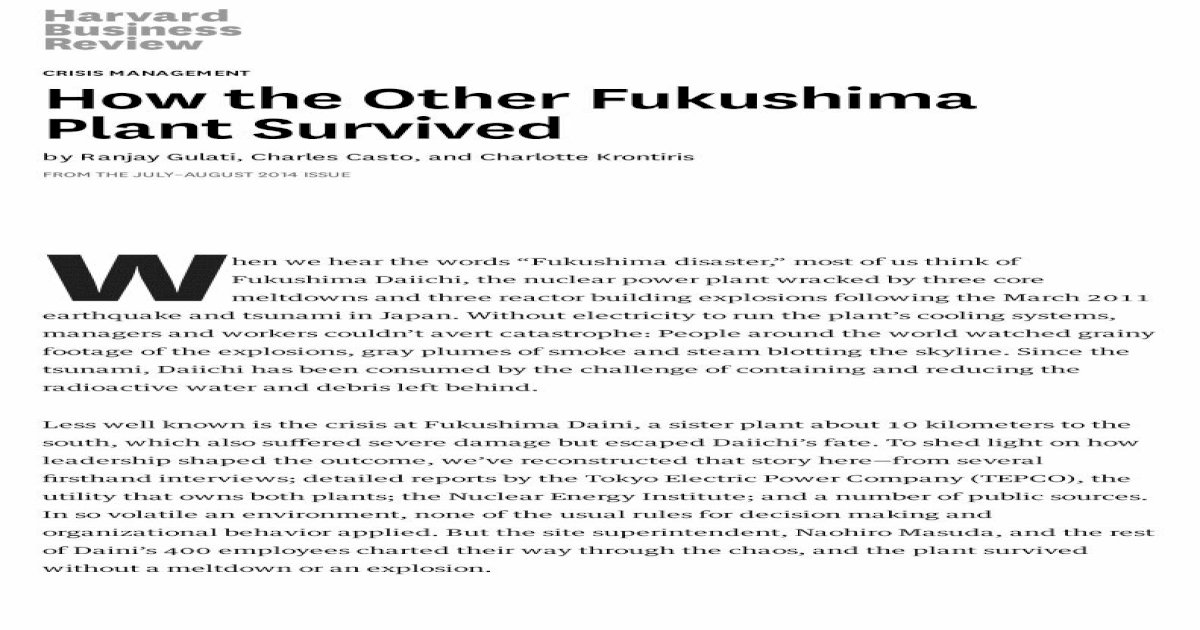

The work was a collaborative effort between the Light Water Reactor Sustainability Program (LWRS), BWROG, the Electric Power Research Institute, the Government of Japan, and Texas A&M University. The new guidance is based on insights gained from evaluating Fukushima Daiichi’s Unit 2 and 3 Reactor Core Isolation Cooling (RCIC) system operation, along with tests that were conducted as part of the Terry Turbine Expanded Operating Band project. The forensics program information also contributed to revised guidance developed for operating BWR emergency cooling systems during extreme external events. It has also led to significant cost savings by reducing training costs by more than $6 million per year over the BWR fleet.

This resource frees plant owners and operators from having to develop and provide their own training.

More than 3,000 individuals, including control room operators, emergency response center staff, and other cognizant personnel, have already been certified through SAIL. The Severe Accident Interactive Learning (SAIL) program was enhanced by information obtained from the forensics working group and is currently hosted on the Institute of Nuclear Power Operations e-learning portal. The BWROG recently developed an interactive computer-based training program for reactor operators, decision makers, and implementers of accident management guidance. thanks to new training programs, operational procedure upgrades and implementation of accident management guidance. Nuclear Regulatory Commission.īWROG recently highlighted three successes enabled by the forensics program that are already having a direct influence on the performance and safety of boiling water reactors (BWRs) in the U.S. This effort includes experts from industry, national laboratories and universities, as well as the U.S. The Boiling Water Reactor Owners’ Group (BWROG), led by utility personnel and GE Hitachi Nuclear Energy, has also been a key contributor to this work through an international forensics program led by the U.S. to provide information and support this effort. Several Japanese organizations, including Tokyo Electric Power Company (TEPCO) Holdings, have worked closely with the U.S.
#Nuclear reactor meltdown in japan how to#
One aspect of that partnership is analyzing data that came from the damaged reactors to see what we can learn and how to apply that knowledge to enhance nuclear safety. government has been collaborating with Japan to further our understanding about the accident progressions that occurred in these three units. While no deaths were attributed to radiation exposure from these accidents, there are still many lessons to be learned from these events. The tsunami led to a total loss of power at the Fukushima Daiichi nuclear power plant and caused fuel melting in three of its reactors and a release of radioactive materials into the environment. The process is being overseen by Tokyo Electric Power, which owns the plant.Mawas a sobering day for the world when a magnitude 9.0 earthquake off the coast of Japan triggered a massive tsunami that destroyed 430 miles of coastline and killed nearly 16,000 people. Tens of thousands of people were evacuated after the disaster and the United Nations says about 40,000 people remain unable to return to their homes because of the radioactive contamination.ĭecommissioning the plant and cleaning up the radiation is expected to take decades. The Fukushima plant was destroyed in March 2011 by a tsunami triggered by one of the most powerful earthquakes ever recorded. Japan’s foreign ministry said in July that regulators deemed it safe to release the water, which even after filtering will still contain traces of tritium, an isotope of hydrogen hard to separate from water. It will also be diluted to meet international standards before any release into the ocean. The water, equivalent to about 500 Olympic-sized swimming pools, has been treated but is also being filtered again to remove harmful isotopes. The water, currently stored in tanks at the site of the ruined plant in Japan’s northeast, would be treated before release but the plan has been condemned by neighbouring countries, Pacific nations and local fishing communities who fear it will affect their livelihoods. Japan approved the release of more than 1 million tonnes of water used to cool the reactors since the meltdown in April 2021. Spring usually starts in Japan in March and summer in June. The Japanese government has said it will start releasing contaminated water from Fukushima, the nuclear power plant devastated by a tsunami in 2011, into the ocean sometime “around this spring or summer”.


 0 kommentar(er)
0 kommentar(er)
